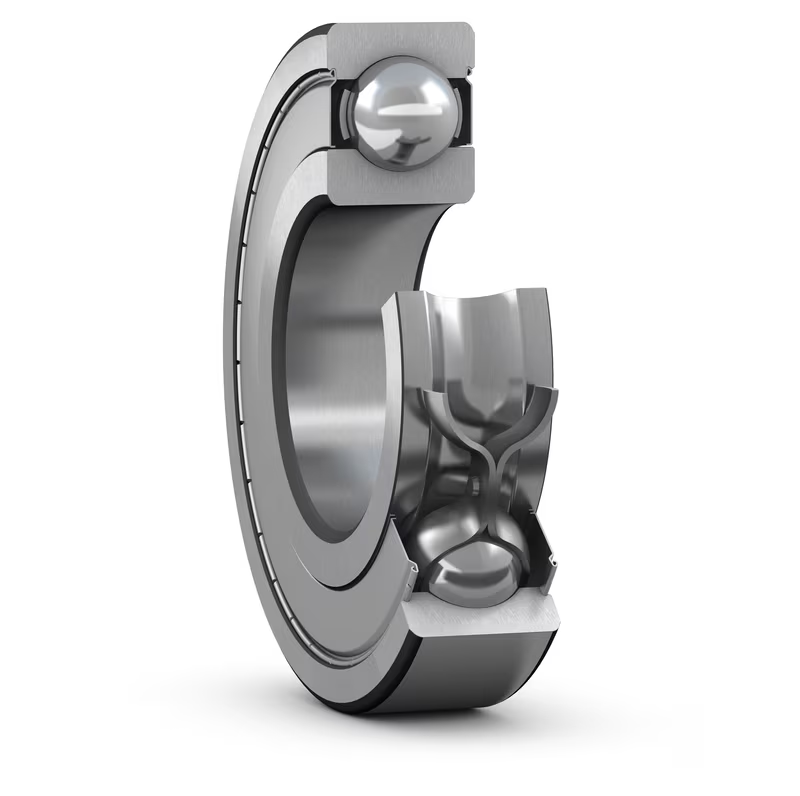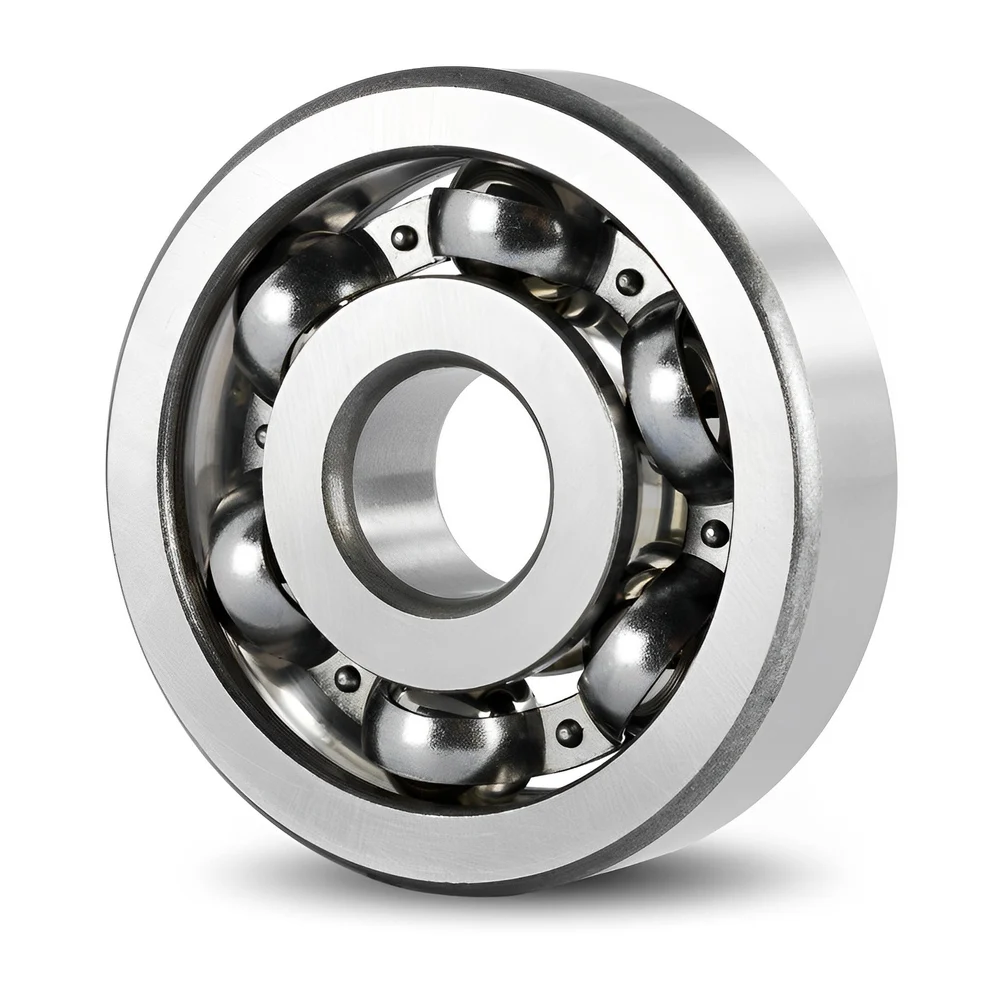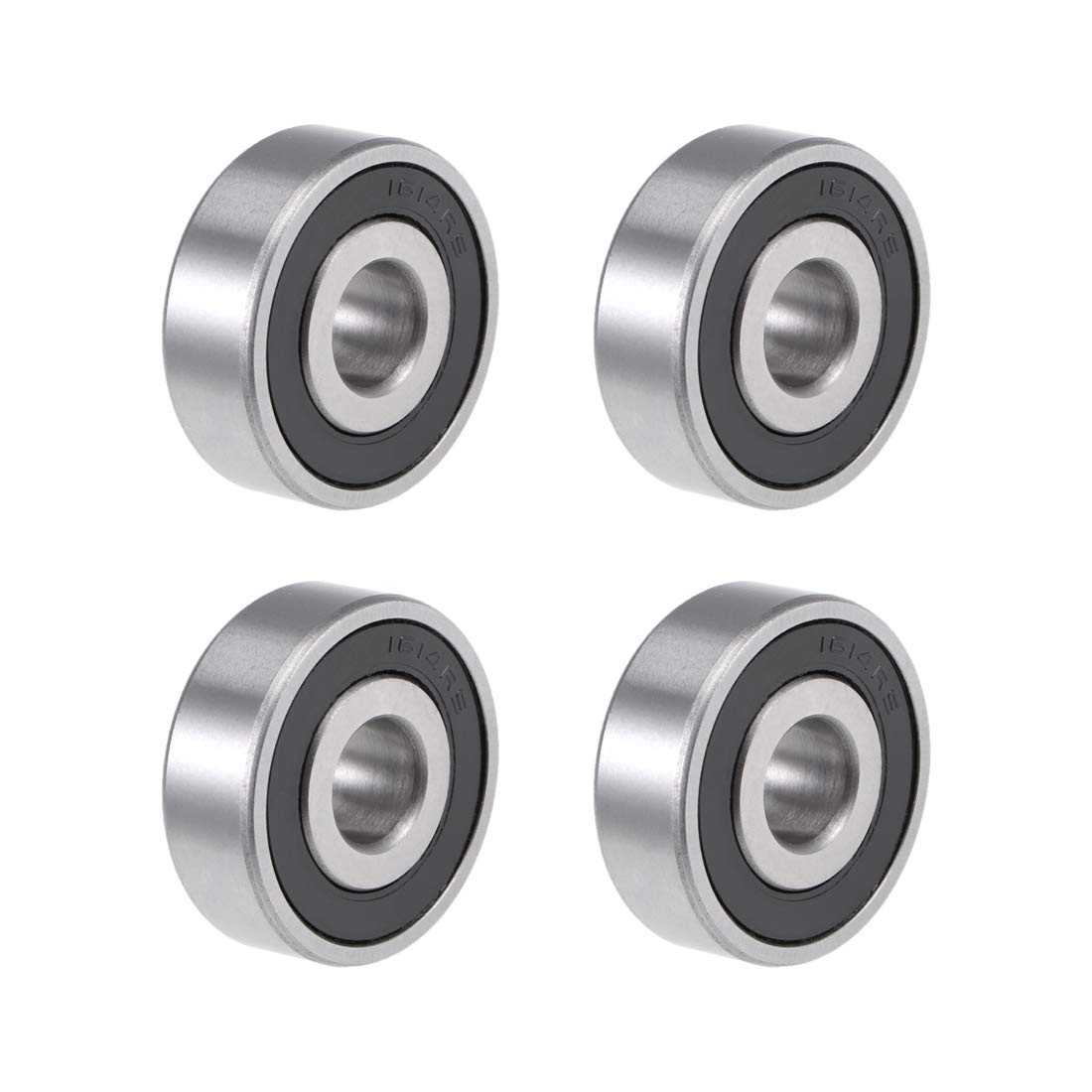Are there specific maintenance practices that can extend the life of deep groove ball bearings?
Proper maintenance practices are essential for maximizing the lifespan and performance of deep groove ball bearings. By following specific maintenance procedures, it is possible to extend the life of these bearings and ensure their smooth operation. Here’s a detailed explanation of specific maintenance practices that can help extend the life of deep groove ball bearings:
- Regular Lubrication:
- Correct Lubricant Selection:
- Proper Installation:
- Regular Inspections:
- Effective Sealing:
- Appropriate Handling and Storage:
- Monitoring Operating Conditions:
Proper lubrication is vital for reducing friction and preventing premature wear in deep groove ball bearings. Regularly lubricating the bearings with the appropriate lubricant helps maintain a protective film between the rolling elements and raceways, reducing friction and minimizing the risk of metal-to-metal contact. Lubrication intervals should be based on the manufacturer’s recommendations and operating conditions.
Choosing the right lubricant is crucial for the optimal performance and longevity of deep groove ball bearings. Factors such as operating temperature, speed, load, and environmental conditions should be considered when selecting a lubricant. Consulting the bearing manufacturer’s recommendations or seeking expert advice can help ensure the correct lubricant is chosen for the specific application.
Correct installation techniques are essential to prevent damage to deep groove ball bearings. This includes ensuring proper alignment, applying appropriate mounting force, and using suitable tools and methods during installation. Improper installation can lead to misalignment, increased stress on the bearings, and premature failure. Following the manufacturer’s installation instructions or seeking professional assistance is recommended.
Regular inspections allow for the early detection of any potential issues with deep groove ball bearings. Inspections can involve checking for signs of wear, damage, or contamination, as well as assessing the condition of seals or shields. Inspecting bearings at predetermined intervals and addressing any identified issues promptly can help prevent further damage and extend the bearing’s service life.
Properly functioning seals or shields help protect deep groove ball bearings from contamination, moisture, and other harmful substances. Regularly inspecting and maintaining the seals or shields ensures their effectiveness in preventing the ingress of contaminants and preserving the lubricant’s integrity. If seals or shields are damaged or worn, they should be replaced promptly.
Proper handling and storage practices are crucial to prevent damage to deep groove ball bearings before installation. Bearings should be handled with clean hands or suitable gloves to avoid introducing contaminants. They should be stored in a clean, dry, and vibration-free environment, ideally in their original packaging or protective covers, until they are ready for use.
Regularly monitoring the operating conditions of machinery or equipment can help identify potential issues that may affect the performance of deep groove ball bearings. Factors such as load variations, temperature fluctuations, excessive vibration, or abnormal noise should be monitored and addressed promptly. Taking corrective actions to optimize operating conditions can help prolong the life of the bearings.
By implementing these specific maintenance practices, it is possible to extend the life of deep groove ball bearings and ensure their reliable and efficient operation. Following manufacturer recommendations, consulting with experts, and adhering to proper maintenance procedures are key to achieving optimal performance and longevity of deep groove ball bearings.
Can you explain the design principles of deep groove ball bearings and their functions?
Deep groove ball bearings are designed based on specific principles to ensure their optimal performance and functionality. Here’s a detailed explanation of the design principles of deep groove ball bearings and their functions:
- Internal Geometry:
- Rolling Elements:
- Cage:
- Sealing and Shielding:
- Lubrication:
- Mounting and Fitting:
The internal geometry of deep groove ball bearings is characterized by the presence of deep raceway grooves in both the inner and outer rings. These grooves enable the bearings to accommodate radial loads, axial loads, or a combination of both. The geometry of the raceway grooves is designed to distribute the load evenly along the rolling elements, minimizing stress concentrations and maximizing load-carrying capacity.
Deep groove ball bearings utilize steel balls as rolling elements. The balls are typically made of high-quality bearing steel and are precision-ground to ensure smooth and consistent rolling. The number, size, and arrangement of the balls in the bearing determine its load-carrying capacity and rotational characteristics. The rolling elements reduce friction and enable the efficient transfer of loads, allowing the bearing to operate with minimal energy losses.
A cage, also known as a retainer, is used in deep groove ball bearings to separate and guide the rolling elements. The cage holds the balls in position, ensuring proper spacing and alignment, and preventing contact between them. The main function of the cage is to maintain ball separation, reduce friction, and enable smooth rotation. Common cage materials include steel, brass, or synthetic polymers.
Deep groove ball bearings may incorporate sealing or shielding mechanisms to protect the internal components from contaminants and retain lubrication. Seals are designed to provide a barrier against dust, dirt, and moisture, while shields offer protection from larger particles. These protective features help extend the bearing’s service life, improve reliability, and maintain proper lubrication conditions.
Lubrication is essential for the smooth operation and longevity of deep groove ball bearings. Proper lubrication reduces friction, heat generation, and wear of the bearing components. The choice of lubricant and the method of lubrication depend on the application requirements and operating conditions. Common lubrication methods include grease packing, oil bath, oil mist, or centralized lubrication systems. Adequate lubrication ensures optimal performance, reduces maintenance needs, and extends the bearing’s lifespan.
Deep groove ball bearings are designed for easy mounting and fitting onto shafts or in housings. They typically have standardized dimensions and tolerances to facilitate interchangeability. Proper mounting techniques, such as using the correct fitting tools and applying appropriate axial and radial clearance, are crucial for achieving optimal bearing performance, reducing stress, and preventing premature failure.
In summary, the design principles of deep groove ball bearings encompass internal geometry with deep raceway grooves, rolling elements in the form of steel balls, cages for ball separation, sealing or shielding mechanisms for protection, lubrication systems for friction reduction, and easy mounting and fitting. These design elements work together to ensure the smooth operation, load-carrying capacity, durability, and reliability of deep groove ball bearings.
Can you provide insights into recent advancements in deep groove ball bearing technology?
Recent years have seen several advancements in deep groove ball bearing technology, driven by the constant pursuit of improved performance, durability, and efficiency. These advancements have been made possible through innovations in materials, manufacturing processes, and design techniques. Here are some insights into the recent advancements in deep groove ball bearing technology:
- Advanced Materials:
- Surface Engineering and Coatings:
- Improved Manufacturing Processes:
- Design Optimization:
- Sealing and Lubrication:
- Sensor Integration:
New materials and alloys have been developed to enhance the performance of deep groove ball bearings. For example, the use of high-performance steels and ceramics has gained popularity. These materials offer enhanced strength, corrosion resistance, and high-temperature capabilities, allowing deep groove ball bearings to operate in demanding environments with improved reliability and longevity.
Advancements in surface engineering and coatings have contributed to the performance of deep groove ball bearings. Innovative coating technologies such as diamond-like carbon (DLC) coatings and various nano-coatings can reduce friction, improve wear resistance, and enhance the overall efficiency of bearings. These coatings also provide protection against contaminants and extend the bearing’s operating life.
Manufacturing techniques have been refined to achieve higher precision and quality in deep groove ball bearings. Advanced machining processes, such as precision grinding and superfinishing, enable tighter tolerances and smoother surface finishes. This results in improved bearing performance, reduced noise levels, and enhanced operational efficiency.
Design optimization has played a significant role in recent advancements in deep groove ball bearing technology. Computer-aided design (CAD) and finite element analysis (FEA) tools have enabled engineers to optimize bearing geometries, load distribution, and cage designs. These advancements have led to improved load-carrying capacity, reduced friction, and enhanced overall performance of deep groove ball bearings.
Advancements in sealing and lubrication technologies have improved the reliability and maintenance requirements of deep groove ball bearings. Effective sealing mechanisms, such as contact seals or non-contact seals, provide better protection against contamination and moisture ingress, extending the bearing’s service life. Additionally, advancements in lubrication techniques, such as the use of advanced greases and solid lubricants, enhance the bearing’s efficiency and reduce friction.
Integration of sensors within deep groove ball bearings has emerged as a recent advancement. These sensors can monitor various parameters, such as temperature, vibration, and load, providing real-time data on bearing health and performance. This enables proactive maintenance and condition monitoring, allowing for timely interventions and preventing potential failures.
In summary, recent advancements in deep groove ball bearing technology have focused on the development of advanced materials, surface engineering and coatings, improved manufacturing processes, design optimization, sealing and lubrication techniques, as well as sensor integration. These advancements have resulted in deep groove ball bearings with enhanced performance, durability, and efficiency. As a result, industries across various sectors can benefit from these advancements, experiencing improved reliability, reduced maintenance, and optimized operational performance.
editor by CX 2024-05-08




